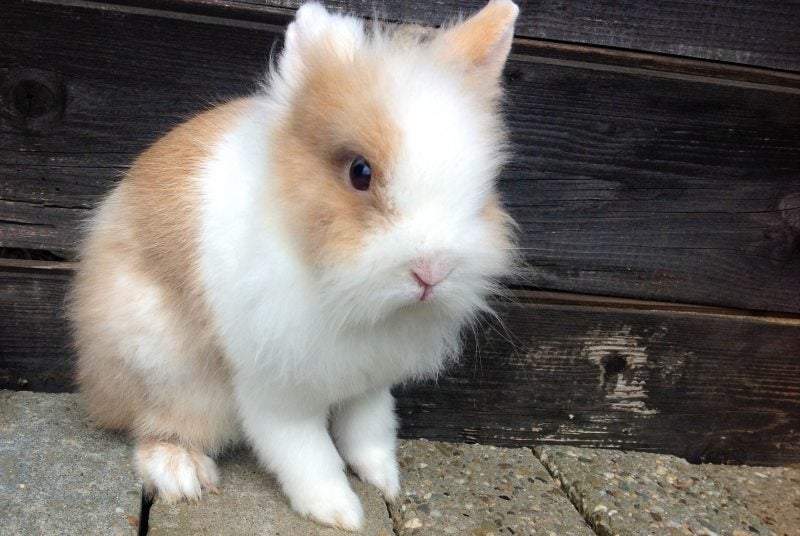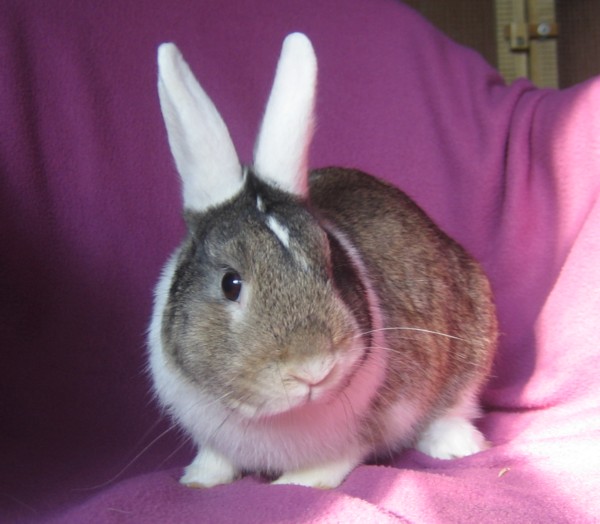feraltydreaming
Well-known member
Good evening, everyone.
A few of you may remember me from my myriad of questions a two or so years ago regarding the genetics involved in working to see what would come of a Satin Angora x Rex cross. I was in North Florida/South Georgia at the time, so no Rex to be found.
Well, I have moved to Tennessee since then and, still, no Rex to be found. However, my housemate raises French Angoras and I raise Satin meat rabbits...so guess what? Yes, I am going to work on my own Satin Angoras until I can find a pair or trio of Rex to breed and then cross.
This actually works out quite well because, so far, I have yet to find Satin Angoras that have good type in Florida or Tennessee (I cannot find Satin Angoras in TN at all yet).
To start with, a broken black French Angora was crossed with a broken chocolate Satin meat rabbit buck. My F1 litter left me with some fantastically-growing hybrids that hit 5 lbs in 8 weeks and actually maintained very good type. The two that I kept were a chocolate charlie buck and a chocolate doe. Three days ago, Hansa (the chocolate doe) gave me an F2 litter that appears to be all broken chocolates.
I was expecting the satinization and longer fur (not wool yet) to start in the F2 generation. However, though the F1 generation was not satinized, the chocolate charlie buck and chocolate doe did have considerably longer fur than their Satin buck parents. Obviously, the F1 generation's longer fur is not wool...it was definitely fur. I was just surprised that some of the hybridization occurred that quickly.
With the 3-day old F2 litter, I already notice that some appear to have satinization...I am so excited to see if any of these will start to have wool! Does anyone happen to know if I should expect just longer fur along with the satinization or is there a possibility of any of these kits having actual wool with this only being the F2 generation?
*grins* MamaSheepdog and others, I will get clear pictures in the next few days, I promise!
*laughs* And, yes, I am being careful with colors mixing here...none of the breeding color to color without paying attention to how it can effect the lines and future generations...No to the shagoutis!
If anyone happens to know of any Rex breeders in TN or anywhere else close, feel free to let me know.
I just thought I would offer an update on the project since at least a few were interested.
Respectfully,
RW
A few of you may remember me from my myriad of questions a two or so years ago regarding the genetics involved in working to see what would come of a Satin Angora x Rex cross. I was in North Florida/South Georgia at the time, so no Rex to be found.
Well, I have moved to Tennessee since then and, still, no Rex to be found. However, my housemate raises French Angoras and I raise Satin meat rabbits...so guess what? Yes, I am going to work on my own Satin Angoras until I can find a pair or trio of Rex to breed and then cross.
This actually works out quite well because, so far, I have yet to find Satin Angoras that have good type in Florida or Tennessee (I cannot find Satin Angoras in TN at all yet).
To start with, a broken black French Angora was crossed with a broken chocolate Satin meat rabbit buck. My F1 litter left me with some fantastically-growing hybrids that hit 5 lbs in 8 weeks and actually maintained very good type. The two that I kept were a chocolate charlie buck and a chocolate doe. Three days ago, Hansa (the chocolate doe) gave me an F2 litter that appears to be all broken chocolates.
I was expecting the satinization and longer fur (not wool yet) to start in the F2 generation. However, though the F1 generation was not satinized, the chocolate charlie buck and chocolate doe did have considerably longer fur than their Satin buck parents. Obviously, the F1 generation's longer fur is not wool...it was definitely fur. I was just surprised that some of the hybridization occurred that quickly.
With the 3-day old F2 litter, I already notice that some appear to have satinization...I am so excited to see if any of these will start to have wool! Does anyone happen to know if I should expect just longer fur along with the satinization or is there a possibility of any of these kits having actual wool with this only being the F2 generation?
*grins* MamaSheepdog and others, I will get clear pictures in the next few days, I promise!
*laughs* And, yes, I am being careful with colors mixing here...none of the breeding color to color without paying attention to how it can effect the lines and future generations...No to the shagoutis!
If anyone happens to know of any Rex breeders in TN or anywhere else close, feel free to let me know.
I just thought I would offer an update on the project since at least a few were interested.
Respectfully,
RW



























